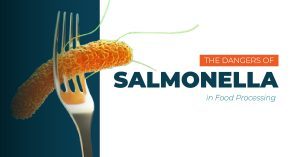
Every industry relies on both caustic and non-caustic alkalis. Caustic alkalis, such as sodium hydroxide and potassium hydroxide, play an important role in industrial processes, including soap and detergent manufacturing and petroleum refining. However, they can pose some risks to human health and the environment. On the other hand, non-caustic alkalis, like sodium bicarbonate and ammonium hydroxide, maintain alkaline properties while posing less risk. In this discussion, we will explore the applications, advantages, and limitations of these two categories.
Caustic Alkalis

Caustic alkalis, such as sodium hydroxide (NaOH) and potassium hydroxide (KOH), are highly reactive and corrosive substances that can cause severe burns and damage to living tissues upon contact. These chemicals are commonly used in industrial processes, including soap and detergent manufacturing, pulp and paper production, petroleum refining, and chemical synthesis.
Sodium Hydroxide (NaOH)

Sodium Hydroxide (NaOH), also known as caustic soda or lye, is a highly corrosive white crystalline solid that contains the Na+ (sodium) cation and the OH− (hydroxide) anion. It is widely used in various industries such as soap and detergent manufacturing, pulp and paper production, petroleum refining, and chemical synthesis. Upon contact with skin or eyes, it can cause severe burns. Sodium hydroxide readily absorbs moisture until it dissolves and is the most widely used industrial alkali. It is often used in drain and oven cleaners and forms alkaline solutions when dissolved in water to neutralize acids in various commercial processes. In petroleum refining, it removes sulfuric and organic acids. In soapmaking, it acts on natural fats or oils, such as tallow or vegetable oil, to produce sodium fatty acid salt (soap) and glycerin (or glycerol). This saponification reaction is the basis for all soapmaking. In papermaking, sodium hydroxide is used to break down wood into pulp and is used in the treatment of cellulose and in the manufacture of many chemicals.
Applications
Chemical Manufacturing
- Saponification: Essential in soap production, where fats and oils react with NaOH to produce glycerol and soap.
- Biodiesel Production: Acts as a catalyst in the transesterification process, converting fats and oils into biodiesel.
- Dyes and Explosives: Used in the manufacturing of dyes and explosives, where it serves as a reactant or catalyst in various chemical reactions.
Paper and Pulp Industry
- Pulping Process: Used in the kraft process to separate lignin from cellulose fibers, crucial for paper production.
Textile Industry
- Mercerization: Treats cotton fibers with NaOH to improve dye uptake, tensile strength, and appearance.
- Dyeing and Bleaching: Removes impurities and prepares fibers for dyeing.
Water Treatment
- pH Regulation: Neutralizes acidic water, making it less corrosive and safer for municipal and industrial systems.
- Precipitation: Helps in precipitating heavy metals and other contaminants from wastewater.
Food Industry
- Cleaning and Sanitation: Used for cleaning and sanitizing equipment due to its ability to break down organic materials and grease.
- Food Processing: Used in processing certain foods, such as peeling fruits and vegetables, and in curing foods like olives.
Petroleum Industry
- Oil Refining: Used in refining processes to remove sulfur compounds and neutralize acidic components in oil.
Pharmaceuticals and Cosmetics
- pH Adjustment: Adjusts the pH of various products.
- Soap and Detergent Manufacturing: A key ingredient in producing soaps and detergents due to its ability to saponify fats.
Aluminum Production
- Bayer Process: Used to extract alumina (aluminium oxide) from bauxite ore, a key step in aluminium production.
Aluminum Production
- Bayer Process: Used to extract alumina (aluminium oxide) from bauxite ore, a key step in aluminium production.
Cleaning Agents
- Industrial Cleaners: A common component in industrial cleaners for degreasing and removing organic matter from surfaces and equipment.
- Commercial Cleaners: Found in commercial drain and oven cleaners due to its effectiveness in dissolving grease and organic deposits.
Textile and Fiber Production
- Rayon Production: Used in the production of rayon, a synthetic fiber made from cellulose.
Metal Processing
- Electroplating and Electrolytic Extraction: Used in electroplating to deposit a layer of metal onto a surface and in electrolytic extraction processes to extract metals from ores.
- Coating Oxides: Applied in processes to coat metals with oxides to enhance their corrosion resistance and appearance.
Batteries
- Electrolyte in Alkaline Batteries: Sometimes used as an electrolyte in alkaline batteries.
Potassium Hydroxide (KOH)

Potassium hydroxide, also known as caustic potash, is a versatile chemical with properties and applications similar to those of sodium hydroxide. It is an odourless, white or slightly yellow solid, which can be flaky or lumpy and is often used in a water solution. Industrially, potassium hydroxide is vital in various sectors due to its caustic, bleaching, and drying properties. It is widely employed in the production of chemicals, soaps, detergents, and as a potent cleaning agent. For instance, liquid drain cleaners typically contain 25 to 36% potassium hydroxide. It also serves as an electrolyte in alkaline batteries and nickel-cadmium accumulators and is used in electroplating, lithography, paint, and varnish removers.
Applications
Soap and Detergent Manufacturing
KOH is used in the production of soft soaps and liquid soaps. Potassium soaps tend to be more soluble in water compared to sodium soaps, making them ideal for use in liquid and cream-based products. Its properties are largely shared with sodium hydroxide (NaOH), making both essential in the production of soaps, detergents, and drain cleaners.
Chemical Manufacturing
It serves as a key reactant in the production of various potassium compounds, such as potassium carbonate, potassium phosphates, and potassium permanganate.
Biodiesel Production
KOH is used as a catalyst in transesterifying fats and oils into biodiesel. Its effectiveness in this role makes it a popular choice in the renewable energy sector.
Battery Electrolytes
In alkaline batteries, potassium hydroxide is used as the electrolyte. This is particularly common in nickel-cadmium (NiCd) and nickel-metal hydride (NiMH) rechargeable batteries.
Agriculture
KOH is utilized to produce potassium-based fertilizers. Potassium is an essential nutrient for plant growth, and KOH is often used to create compounds like potassium nitrate and potassium phosphate, which are common fertilizers.
Food Industry
Potassium hydroxide granules function as an acidity regulator and stabilizer, designated as E525, and are added to products like confectionery, preserves, cocoa, and dietary supplements. Additionally, it is used in food processing for its role in pH control and as a stabilizer in various food products.
Pharmaceuticals
KOH is involved in the production of various pharmaceuticals. It’s used in the preparation of certain medications and as a reagent in some drug formulations.
Cleaning Products
Due to its caustic nature, KOH is used in industrial cleaners and degreasers. It effectively removes oils, grease, and other organic materials from surfaces.
Textile Industry
KOH is used in the textile industry for processes such as mercerizing cotton, which increases the strength, lustre, and dye affinity of the fabric.
Gas Purification
In gas purification processes, KOH solutions can be used to absorb acidic gasses, such as carbon dioxide and hydrogen sulfide, from gas streams.
Metal Processing
KOH is used in the electroplating industry and in the etching of metals. It helps clean and prepare metal surfaces for plating or other treatments.
Laboratory Reagent
Potassium hydroxide is widely used as a reagent in laboratories for various analytical procedures, including titration and as a strong base in chemical synthesis. It is integral to the manufacture of laboratory reagents used in gynaecological tests and diagnostics.
Material Preservation and Hydrophobization
KOH is used in the preservation and hydrophobization of materials such as sandstone, granite, limestone, travertine, and paving blocks. This application helps in extending the lifespan and durability of these materials.
Silicon Wafer Texturing
KOH is utilized in the texturing of silicon wafers for photovoltaic cells. This process enhances the efficiency of solar cells by increasing their surface area and light absorption capabilities.
Non Caustic Alkalis

Non-caustic alkalis are milder and less reactive basic compounds that are safer to handle compared to caustic alkalis. They retain typical alkaline properties, such as neutralizing acids and turning litmus paper blue, but are not as corrosive. Common examples include sodium bicarbonate (baking soda) and ammonium hydroxide (ammonia solution), which find applications in food processing, water treatment, pharmaceuticals, household cleaning products, and personal care items. Due to their reduced reactivity and safer handling profile, non-caustic alkalis are preferred for various uses where mild alkalinity is sufficient and lower risk is desired.
Sodium Bicarbonate (NaHCO₃)

Sodium bicarbonate (NaHCO3) is a white crystalline or powdery solid that is a source of carbon dioxide. It is used as an ingredient in baking powders, in effervescent salts and beverages, and as a constituent of dry-chemical fire extinguishers. Its slight alkalinity makes it useful in treating gastric or urinary hyperacidity and acidosis. It is also employed in certain industrial processes, such as tanning and wool preparation.
Many bakery products are leavened by carbon dioxide from added baking soda or sodium bicarbonate in baking powder. When added without the offsetting amounts of dry acids or acid salts present in baking powder, sodium bicarbonate tends to make dough or batter alkaline, causing flavour deterioration and discolouration and slowing carbon dioxide release. The addition of an acid-reacting substance promotes vigorous gas evolution and maintains acidity within a favourable range. The rate of gas release affects the size of the bubbles produced in the dough or batter, consequently influencing the grain, volume, and texture of the finished product.
Applications
Animal Feed Additives
25 percent of the global sodium bicarbonate usage is dedicated to animal feed additives.
Textile Industry
Sodium bicarbonate is used in dyeing wool, silk, and leather.
Plastics and Polymers
It serves as a purifier and catalyst in complex plastic and polymer manufacturing.
Rubber and Plastic Manufacturing
The decomposition of sodium bicarbonate releases carbon dioxide, which is crucial in rubber and plastic manufacturing. This carbon dioxide release is precisely controlled to shape the final rubber or plastic products.
Baking and Cooking
Similar to its role in shaping rubber and plastic, sodium bicarbonate releases carbon dioxide during baking, causing bread to rise and making cookies fluffy. Adding sodium bicarbonate to cooking peas or other vegetables softens them.
Tarnish-Removing Cleaners
Most tarnish-removing cleaners include sodium bicarbonate.
Environmental Applications
Like its use in deodorizing refrigerators, sodium bicarbonate controls sulfide odors in wastewater treatment plants, inhibits biological growth, and maintains the proper alkalinity due to its high pH value. It chemically binds with sulfur dioxide to desulfurize gas, treating industrial emissions before they are released into the atmosphere.
Pharmaceutical Industry
Sodium bicarbonate’s disinfecting properties make it essential in the pharmaceutical industry, where it eliminates bacteria and fungi.
Fire Safety
Dry, chemical-based fire extinguishers for homes and businesses contain sodium bicarbonate to combat grease and electrical fires.
Ammonium Hydroxide (NH₄OH)

Ammonium hydroxide is a solution of ammonia gas in water and is a common commercial form of ammonia. It is a colourless liquid with a strong characteristic odour. In its concentrated form, ammonium hydroxide can cause burns on contact with the skin. Ordinary household ammonia, used as a cleanser, is actually dilute ammonium hydroxide.
The water solution is generally represented by the formula NH4OH, although no appreciable amount of the molecular species NH4OH is present. The solution consists primarily of large quantities of water (H2O) and ammonia (NH3), and smaller quantities of ammonium ion (NH+4) and hydroxide ion (OH−). This solution yields many important industrial applications.
Applications
Cleaning Agent
It’s used in various cleaning products, especially in household cleaners and industrial degreasers, due to its ability to dissolve grease and oils effectively.
Fertilizer Production
Ammonium hydroxide is a key component in the production of ammonium-based fertilizers, which are crucial for agricultural purposes to provide essential nitrogen to plants.
Textile Industry
It’s utilized in the textile industry as a neutralizing agent in the dyeing process, helping to fix dyes to fabrics.
Water Treatment
Ammonium hydroxide is used in water treatment processes to adjust pH levels and remove contaminants like heavy metals.
Pharmaceuticals
It serves as a reagent in pharmaceutical manufacturing, particularly in the synthesis of certain drugs.
Food Industry
In the food industry, it’s used as a leavening agent and pH regulator in baked goods and other food products.
Laboratory Reagent
Ammonium hydroxide is commonly used in laboratories as a reagent in various chemical reactions and analyses.
Manufacturing
It’s used in the manufacturing of various products, such as plastics, explosives, and textiles, among others, as a reactant or solvent.
Sodium Carbonate (Na₂CO₃)

Sodium carbonate, also known as soda ash (Na₂CO₃), is commonly found in nature as a component of mineral waters and in solid mineral forms such as natron, trona, and thermonatrite. It is extensively used in the manufacturing of glass, detergents, and cleansers. Sodium carbonate is combined with various acids to create sodium salts for both industrial and laboratory applications. One common reaction involves its combination with hydrochloric acid (HCl) to produce sodium chloride (NaCl), carbon dioxide (CO₂), and water (H₂O):
Na₂CO₃ + 2HCl → 2NaCl + CO₂ + H₂O
Another important reaction occurs when sodium carbonate reacts with sulfuric acid (H₂SO₄), resulting in the production of sodium sulfate (Na₂SO₄), carbon dioxide (CO₂), and water (H₂O):
Na₂CO₃ + H₂SO₄ → Na₂SO₄ + CO₂ + H₂O
These reactions are widely used in various industries for the production of sodium-based compounds and for controlling pH levels in different processes.
Applications
Manufacturing of Glass
Sodium carbonate is a key component in the production of glass. It acts as a flux, lowering the melting point of silica, facilitating the fusion of other ingredients, and improving the clarity and durability of the glass.
Detergents and Cleaning Products
It is a major ingredient in detergents and cleaning agents due to its ability to soften water, emulsify oils, and neutralize acidic compounds. In laundry detergents, it aids in the removal of grease and stains.
Water Treatment
Sodium carbonate is used in water treatment processes to adjust pH levels and precipitate out impurities like calcium and magnesium ions, which can cause hardness in water.
pH Regulation in Chemical Processes
It is employed in various chemical processes to regulate pH levels, acting as a buffering agent and stabilizing solution acidity or alkalinity.
Papermaking
In the paper industry, sodium carbonate is used as a sizing agent to improve the strength and durability of paper fibers, as well as to control the pH during the papermaking process.
Textile Processing
It is used in textile industries for dyeing and bleaching processes, as it helps to fix dyes to fibers and to neutralize acidic residues from bleaching agents.
Food Additive
Sodium carbonate, although less common compared to its close relative sodium bicarbonate (baking soda), is occasionally used as a food additive, particularly in Asian cuisine for preparing certain dishes or in food processing for its alkalizing and pH-adjusting properties.
Conclusion: Caustic and Non Caustic Alkalis
Both caustic and non-caustic alkalis are vital in various industries, but they differ in terms of risk and reactivity. Caustic alkalis like sodium hydroxide and potassium hydroxide are essential in industrial processes but come with significant hazards to health and the environment. On the other hand, non-caustic alkalis such as sodium bicarbonate and ammonium hydroxide offer milder alternatives with fewer risks while still maintaining alkaline properties. However, the suitability differs based on the application. It is important to understand the applications, advantages, and limitations of both categories to ensure safe and effective use across diverse sectors, ultimately contributing to sustainable industrial practices and environmental stewardship.














